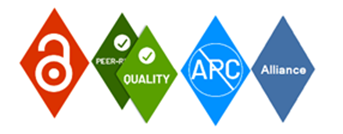Masterji’s Resistance in Aravind Adiga’s Last Man in Tower: An Embodiment of the Struggle of the Marginalized Class
DOI:
https://doi.org/10.53032/TCL.2021.6.1.11Keywords:
Globalization, Urbanization, Privatization, Capitalism, MarginalizedAbstract
Aravind Adiga’s Last Man in Tower, published in 2011, is a trenchant critique on the effects of globalization, urbanization, privatization and capitalism in the post-colonial era in India. All these changes in the contemporary society have effectively bifurcated the entire country into two groups—the rich and the poor, the centre and the margin, the privileged upper class and the underprivileged lower class. In the novel Dharmen Shah, a real estate mogul represents the first group of people who are socio-politically and economically highly influential, whereas Yogesh A. Murthy, aka Masterji, is the embodiment of the marginalized class that are constantly dominated and exploited by the former group. My present paper aims to analyse in detail how far Masterji is able to resist the scabrous sufferings unleashed by the rich realtor Dharmen Shah, and how far Masterji’s resistance becomes an incarnation of the resilience of marginalized people in the contemporary society.
Downloads
References
Adiga, Aravind. Last Man in Tower. Atlantic Books, 2011.
Gupta, Ashish. A Critical Inquisition of the Novels of Aravind Adiga. Dattsons, 2018.
Monika, Mrs. S. Contemporary Social Issues in Aravind Adiga’s The White Tiger and Last Man in Tower. Sara Book Publication, 2015.
Shepherd, Kancha Ilaiah. Why I Am Not a Hindu: A Sudra Critique of Hindutva Philosophy, Culture and Political Economy. Sage, 2019.
Sinha, Oorja Rajan. “Peripheral Nature of Dalit Psyche.” Voice of the Voiceless: Conceptualizing the Marginalized Psyche, edited by Gulshan Das and G.A. Ghanshyam, Authorspress, 2012.
Valdes, Marcela. “Book Review.” The Washington Post, 19 Sep. 2011, www.washingtonpost.com/entertainment/books/book-review-last-man-in-tower-by-aravind-adiga/2011/09/15/gIQAAHPAgK_story.html. Accessed 25 Mar. 2021.
Valiyamattam, Rositta Joseph. “Aravind Adiga’s Last Man in Tower: Survival Strategies in a Morally Ambivalent India.” World Literature Today, Sep. 2017, www.worldliteraturetoday.org/2017/september/aravind-adigas-last-man-tower-survival-strategies-morally-ambivalent-india-rositta#fn:2. Accessed 25 Mar. 2021.
White, Alan. “Last Man in Tower: a parable built on ambiguity.” The National News, 29 Jul. 2011,www.thenationalnews.com/arts-culture/books/last-man-in-tower-a-parable-built-on-ambiguity-1.436021. Accessed 25 Mar. 2021.
Downloads
Published
How to Cite
Issue
Section
License
Copyright (c) 2021 The Creative Launcher

This work is licensed under a Creative Commons Attribution-NonCommercial-NoDerivatives 4.0 International License.














